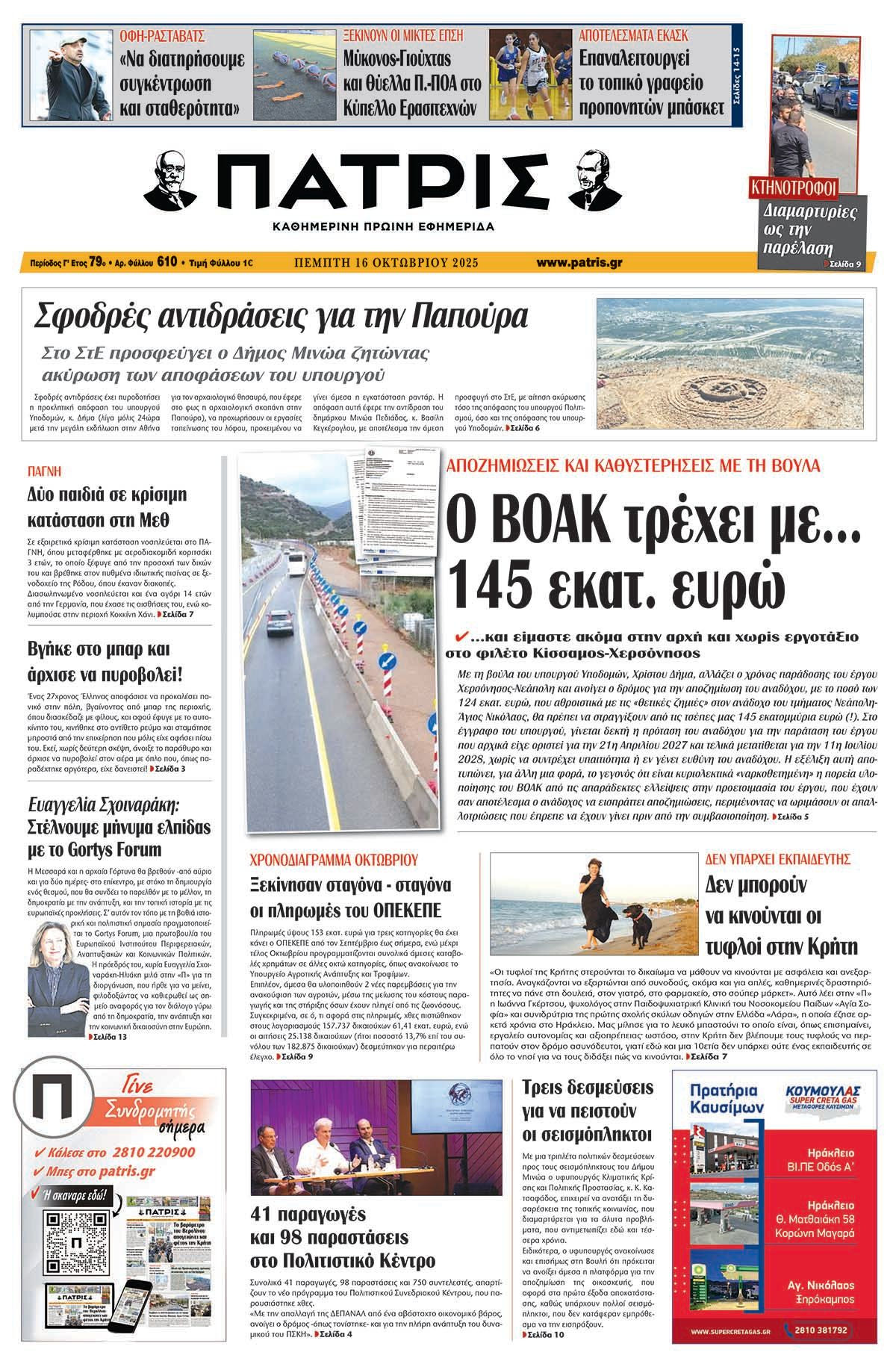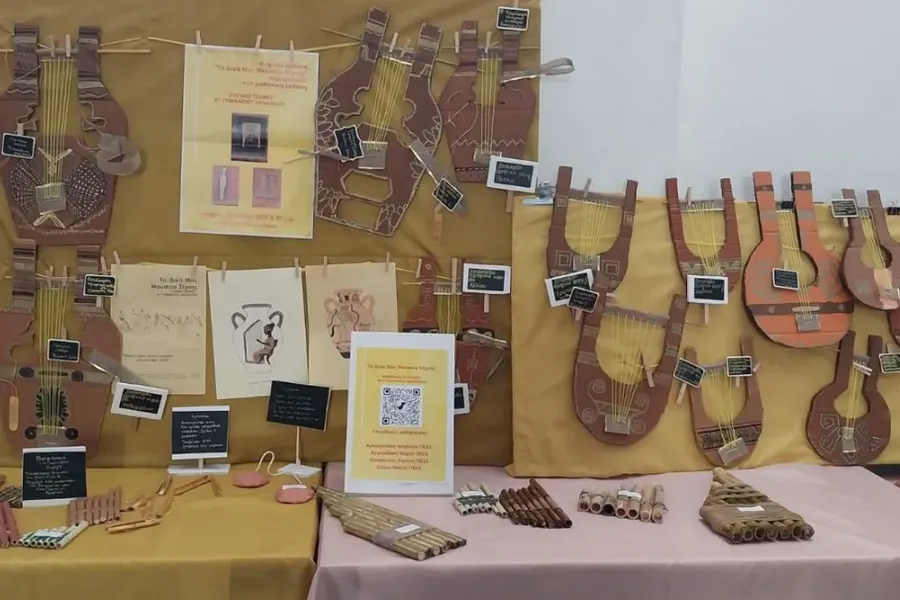Three museums under one roof—at Heraklion’s 8th Junior High School! These are three exhibitions that captivated visitors with the creativity of student projects, all developed under the guidance of their teachers.
Dubbed “Moments of Art,” the exhibitions showcased the work of young artists from the school on Georgiou Maranti Street. For those who missed them in person, the exhibits can be viewed online via the school’s website or by scanning the QR code.
A highlight of the initiative was the formal letters written by students (in English) to the British Museum, making a well-argued case for the return of the Parthenon Marbles. Through this symbolic campaign, students not only advocated for the repatriation of Greece’s cultural treasures but also gained a deeper understanding of their historical significance.
The educators spoke to “P” about the wide range of exhibits presented in recent days, revealing the rich body of work students produced through interdisciplinary activities, research, and artistic expression.
Iphigenia Arnaoutaki, a civil engineer and teacher, describes the enthusiasm and dedication behind this innovative project:
“A year full of admiration for museums around the world, research into their exhibits, and reflection on how a museum piece can inspire educational activities in every classroom. It was a year of color, brushes, good spirits, improvisation, and creative thinking. All this came together in a unique exhibition in our school’s multipurpose hall, which we called ‘Our Own Art Museums.’”
She also highlights the crucial role of music teacher Eirini Theofanous, who guided students in crafting musical instruments—guitars, lyres, castanets, cymbals, and panpipes—in the Technology Lab.
“In these workshops, students learned new ways to collaborate, passing projects from one pair of hands to another. Roles changed depending on each student’s energy and talents, all united by the common goal of creating a finished piece.”
The journey began with a Christian art museum, moved on to a museum of ancient technology—featuring guitars, flutes, strategy board games, war machines, and ingenious ancient Greek devices—and concluded with a museum of ancient Greek artifacts inspired by collections abroad.
“Our handmade collections take you on a journey through your own past, encouraging thought, emotion, and personal reflection,” she adds.
Maria Angelidaki, a theology teacher, describes her thematic unit, “From Fayum Portraits to Byzantine Icons,” which explored the evolution of portrait art from realism to spiritual and symbolic representation.
“Students from class G2 participated actively, using traditional materials like cassia, craquelure, wood glue, and varnish to respectfully approach the unique aesthetics of icon painting,” she notes. Students from other classes also joined the project.
Maria Zikou, English teacher, highlights the interdisciplinary nature of the exhibitions, which involved students from classes A3, A4, B1, G1, G2, and G3.
“Students collected information and created models of ancient Greek artifacts, bringing objects from international museum halls into our own classroom.
Through this journey, we walked the paths of ancient Athens, Minoan Crete, and Mycenae, and took virtual tours of museums such as the British Museum, the Louvre, and the Vatican,” she explains.
The students worked diligently, creating replicas of vases, Mycenaean figurines, jewelry, and posters with historical content. Noteworthy projects included red-figure vases using collage techniques, clay Mycenaean figurines, and replicas of iconic pieces like the Caryatid, the Winged Victory of Samothrace, the Venus de Milo, and the marble monument of the Nereids.
Educators Iphigenia Arnaoutaki, Maria Angelidaki, Eirini Theofanous, and Maria Zikou emphasize that these exhibitions were a celebration of creativity and teamwork, demonstrating that a school can truly become a vibrant cultural hub.
For those who couldn’t visit these “Moments of Art” in person, the material is available on the school’s website http://ekuemata.blogspot.com/ or via QR code—inviting everyone to explore the imaginative work of students who brought history and art to life.





